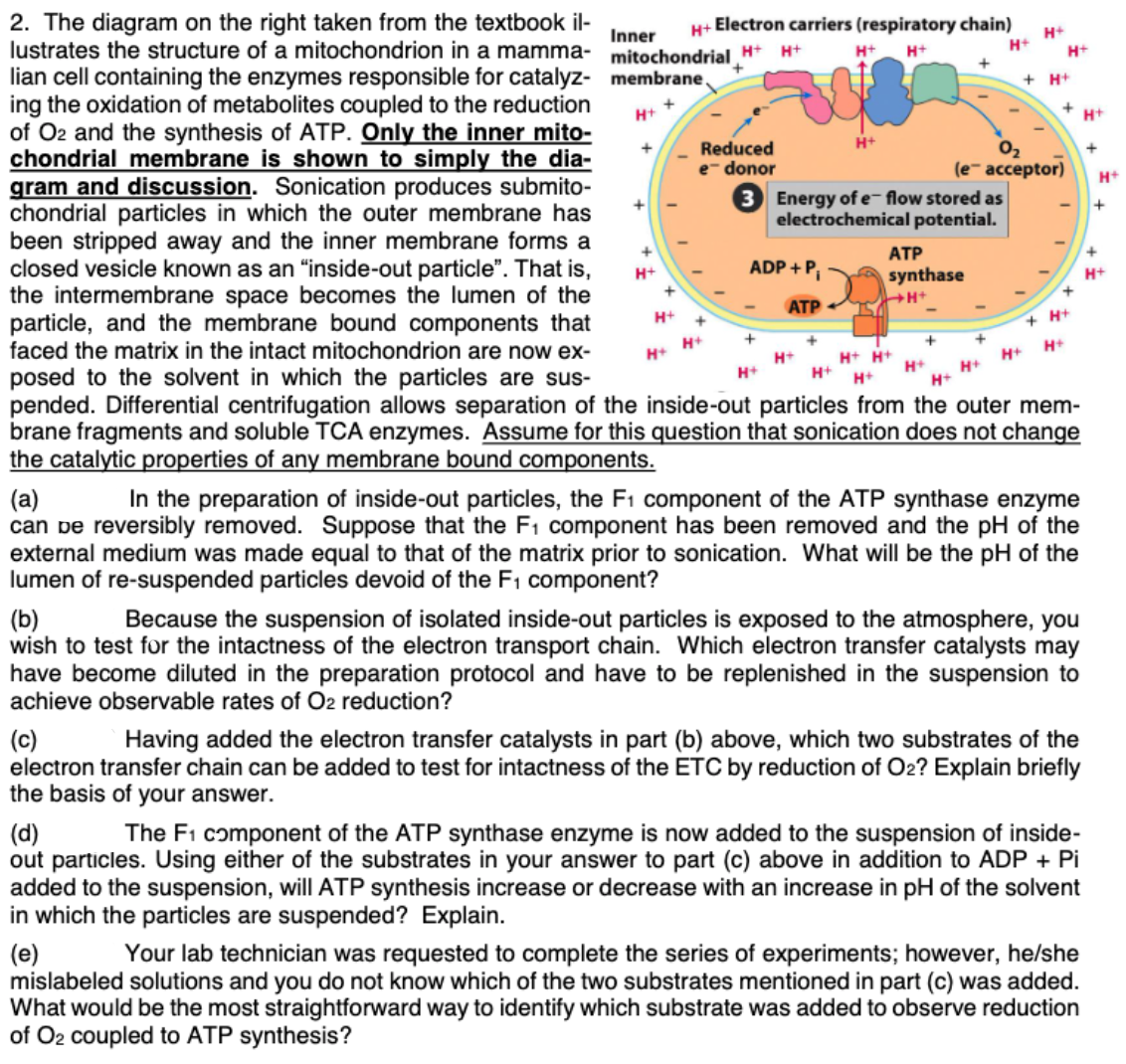In the preparation of inside-out particles, the F1 component of the ATP synthase enzyme (a) can pe reversibly removed. Suppose that the F1 component has been removed and the pH of the external medium was made equal to that of the matrix prior to sonication. What will be the pH of the lumen of re-suspended particles devoid of the F1 component? (b) wish to test for the intactness of the electron transport chain. Which electron transfer catalysts may Because the suspension of isolated inside-out particles is exposed to the atmosphere, you have become diluted in the preparation protocol and have to be replenished in the suspension to achieve observable rates of Oz reduction? (c) electron transfer chain can be added to test for intactness of the ETC by reduction of O2? Explain briefly the basis of your answer. Having added the electron transfer catalysts in part (b) above, which two substrates of the (d) out particles. Using either of the substrates in your answer to part (c) above in addition to ADP + Pi added to the suspension, will ATP synthesis increase or decrease with an increase in pH of the solvent in which the particles are suspended? Explain. (e) mislabeled solutions and you do not know which of the two substrates mentioned in part (c) was added. What would be the most straightforward way to identify which substrate was added to observe reduction of O2 coupled to ATP synthesis? The F1 component of the ATP synthase enzyme is now added to the suspension of inside- Your lab technician was requested to complete the series of experiments; however, he/she
Electron Transport Chain
The electron transport chain, also known as the electron transport system, is a group of proteins that transfer electrons through a membrane within mitochondria to create a gradient of protons that drives adenosine triphosphate (ATP)synthesis. The cell uses ATP as an energy source for metabolic processes and cellular functions. ETC involves series of reactions that convert redox energy from NADH (nicotinamide adenine dinucleotide (NAD) + hydrogen (H)) and FADH2(flavin adenine dinucleotide (FAD)) oxidation into proton-motive force(PMF), which is then used to synthesize ATP through conformational changes in the ATP synthase complex, a process known as oxidative phosphorylation.
Metabolism
Picture a campfire. It keeps the body warm on a cold night and provides light. To ensure that the fire keeps burning, fuel needs to be added(pieces of wood in this case). When a small piece is added, the fire burns bright for a bit and then dies down unless more wood is added. But, if too many pieces are placed at a time, the fire escalates and burns for a longer time, without actually burning away all the pieces that have been added. Many of them, especially the larger chunks or damp pieces, remain unburnt.
Cellular Respiration
Cellular respiration is the cellular process involved in the generation of adenosine triphosphate (ATP) molecules from the organic nutritional source obtained from the diet. It is a universal process observed in all types of life forms. The glucose (chemical formula C6H12O6) molecules are the preferred raw material for cell respiration as it possesses a simple structure and is highly efficient in nature.

Trending now
This is a popular solution!
Step by step
Solved in 3 steps









